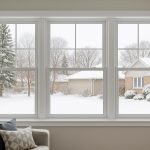When people think about building something—whether it’s a house, a school, or an office—they usually imagine the parts they’ll actually use. Bedrooms, kitchens, doors, stairs. Maybe even cool lighting or big windows. But a lot of what makes a building work isn’t obvious at all. In fact, some of the most important parts are hidden behind walls, above ceilings, or under floors. And without those hidden features, things can go very wrong, very fast.
That’s why building smart doesn’t just mean picking the right paint color or tiles. It means planning for the parts you don’t see, too—the parts that keep everything safe, warm, and easy to fix. It might sound boring at first, but those “invisible” details are the reason buildings stay comfortable and safe for years.
Hidden Helpers: Why Access Really Matters
Think about this: if something goes wrong inside a wall—say a water pipe starts leaking or a wire burns out—how do you get to it? Tearing apart the wall is messy, expensive, and kind of a nightmare. That’s where access panels come in. These are small doors or hatches placed in ceilings, walls, or even floors that give people a way to reach hidden systems like plumbing, heating, and electric work without destroying anything.
Access panels aren’t just about repairs, either. Builders install them from the start so that everything behind the scenes stays reachable for inspections, upgrades, or safety checks. It’s one of those small details that keeps big problems from getting worse. A good example of this is found at Access Panels Direct, where panels are made to blend in with their surroundings while still being easy to open when needed.
Smart builders and architects know that including access points early on saves time, money, and stress later. It’s one of those quiet decisions that doesn’t show off—but really pays off.
What’s Going on Behind the Walls?
There’s a lot more happening inside a building than most people realize. Behind almost every wall, there could be:
- Electrical wires powering lights and devices
- Plumbing pipes carrying water in and out
- Air ducts moving heat or cool air
- Fire safety equipment and alarms
- Internet or phone cables
Now imagine something goes wrong with any of those systems. Without an access panel or hatch nearby, the only way to reach the problem might be to cut a hole in the wall or ceiling. That’s not only a hassle—it can also be dangerous or delay important repairs. In big buildings like hospitals, schools, or hotels, delays like that just aren’t an option.
That’s why a smart design always includes access points in the right places. It makes future maintenance much easier and keeps things working properly without wrecking the space.
More Than Just Function—Access Panels Can Look Good Too
A lot of people worry that adding access panels will mess up how their space looks. That might’ve been true in the past when panels were bulky or hard to hide, but it’s not like that anymore. Today, there are panels made to match all kinds of surfaces—smooth walls, tiled ceilings, even painted plasterboard. Some are flush-fit, meaning they sit almost flat against the wall or ceiling so they don’t stick out.
Designers now use panels that blend in or even disappear when painted over. That means you can have both style and practicality without giving anything up. In fancier buildings, even custom panels are available to match very specific design styles.
It’s another example of how smart building choices don’t have to look boring. You can get a clean, modern design while still planning for things that might go wrong behind the scenes.
Making Fixes Simple Later On
It’s easy to forget that buildings age just like everything else. Pipes rust. Wires wear out. Heating systems break down. And when they do, getting to them quickly matters. That’s why every smart builder includes access points during the design stage—not just during repairs.
Fixing problems fast is a big deal in homes and even more important in places like schools or hospitals, where people depend on things running smoothly. An access panel in the right spot can make the difference between a quick fix and a total rebuild. And for homeowners, it can mean saving hundreds—sometimes thousands—of pounds in repair costs.
Being able to fix things without wrecking the walls? That’s building smart.
Better Safety for Everyone
Access panels also help with fire safety and inspections. Some panels are made to be fire-rated, which means they’re designed to hold back flames for a certain amount of time. That gives people more time to get out in an emergency and slows the fire from spreading into hidden spaces.
Fire-rated panels are often required by building codes in places like apartment blocks, offices, and hospitals. Without them, a fire could move too fast through the structure, especially through things like ductwork and wall cavities. So these panels aren’t just about convenience—they’re part of keeping people safe.
It All Adds Up
When you look at a building, you probably don’t notice the access hatches in the ceiling or the small panel on the wall near the boiler. But that’s kind of the point. These features are meant to stay out of the way until they’re needed. And when they are, they make a huge difference.
Every pipe, every wire, every vent—none of those things work forever. Smart buildings are built to be fixed, not just used. And the only way to do that is by making sure people can get to the parts that matter without making a mess or shutting the place down.
So next time you walk into a building, look a little closer. There might be a small, square door near the ceiling or a hidden hatch in the corner. It may not seem important, but it’s part of what keeps the whole place working.
Quick Recap: Why the Hidden Parts Matter
Behind every smooth wall and clean ceiling, there’s a system doing real work. Pipes, wires, heating ducts—they all need to be reachable. Access panels make that possible without ruining the look of a space or causing damage. Whether it’s for fixing a leak, checking on wires, or making sure everything’s safe, a hidden panel can make a big difference.
Building smart isn’t just about what you can see. It’s about planning ahead so the things you don’t see are easy to reach when it counts. Smart buildings stay safer, last longer, and cost less to fix—all because of the choices made before the first wall even goes up.
Lynn Martelli is an editor at Readability. She received her MFA in Creative Writing from Antioch University and has worked as an editor for over 10 years. Lynn has edited a wide variety of books, including fiction, non-fiction, memoirs, and more. In her free time, Lynn enjoys reading, writing, and spending time with her family and friends.















